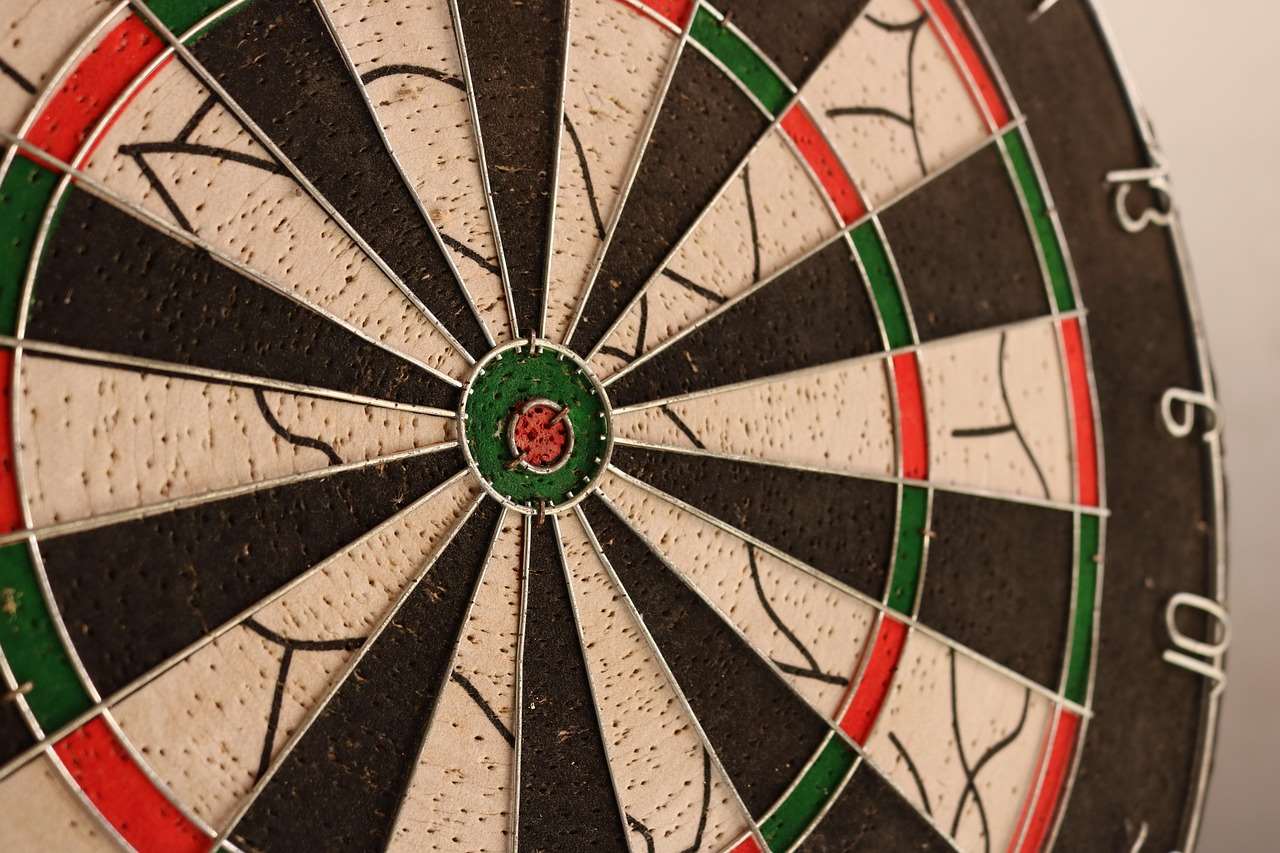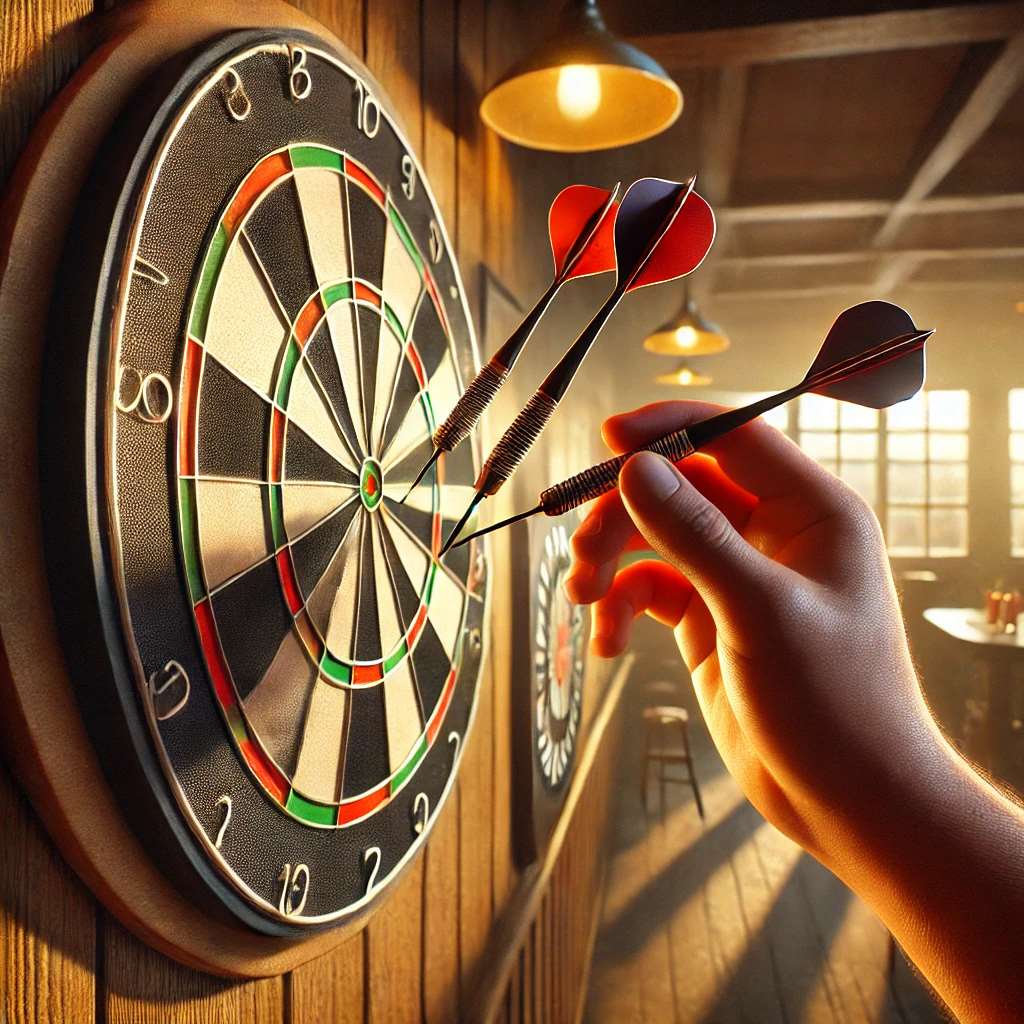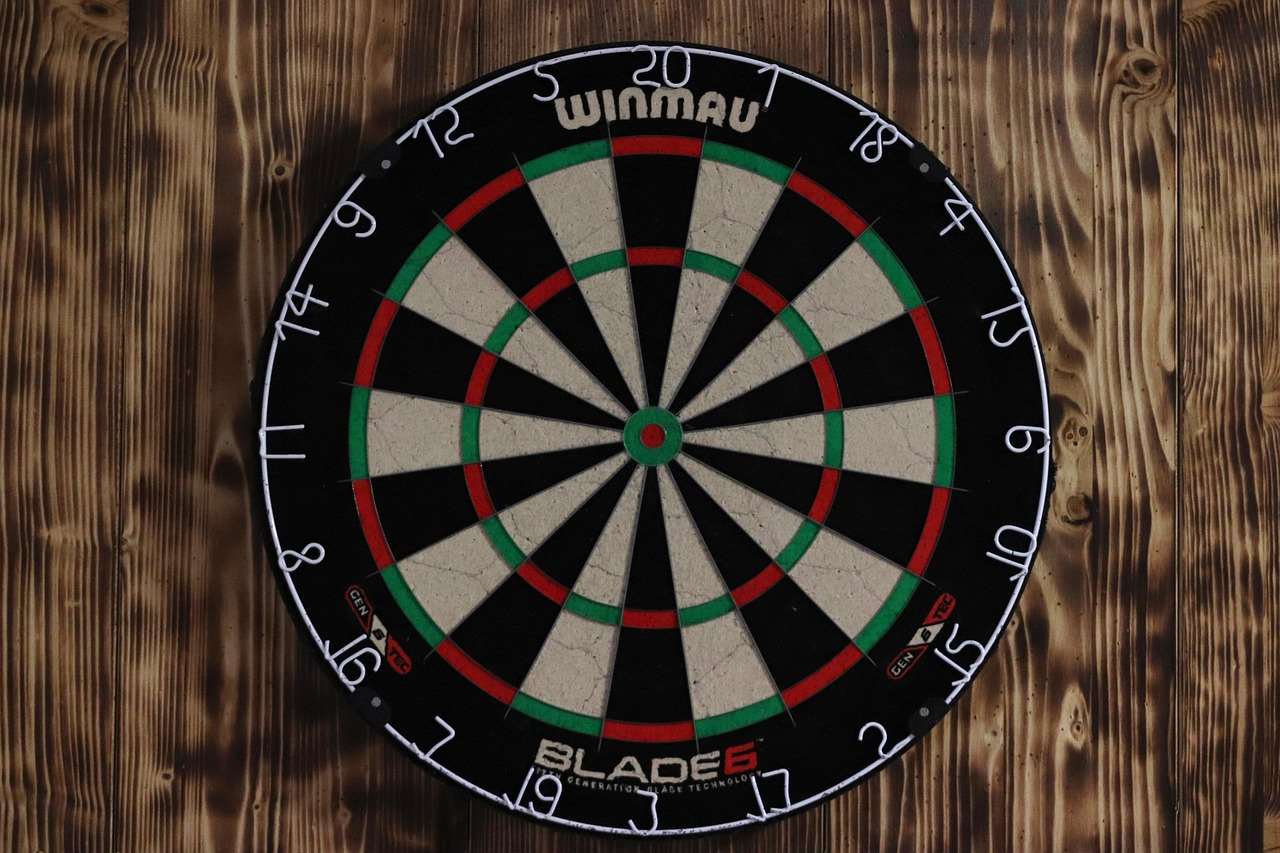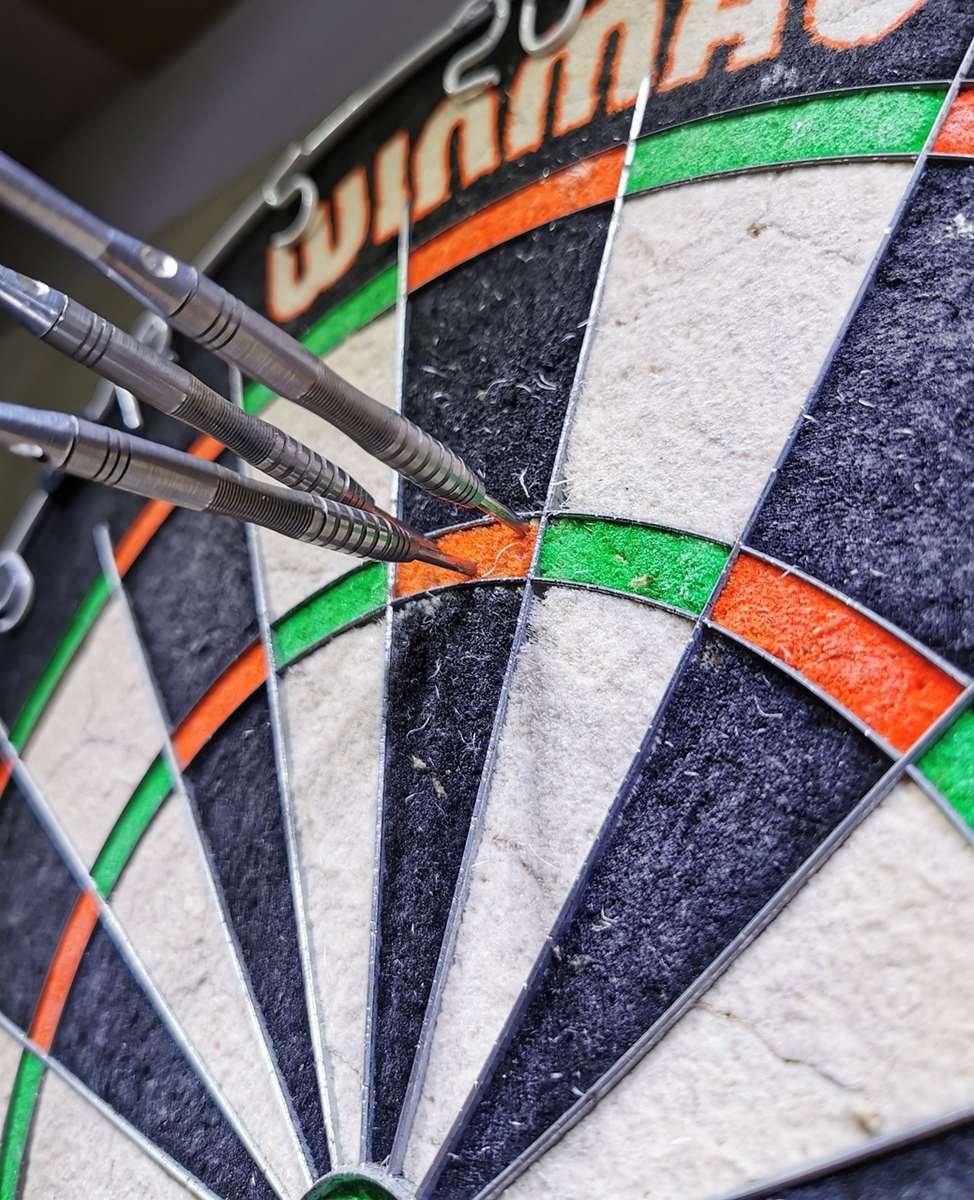While **sharpening soft tip darts** isn’t about creating a razor-sharp point, it’s crucial for maintaining optimal dartboard contact and preventing bounce-outs. This article will guide you through the proper techniques for shaping and maintaining your soft tips for improved scoring. You’ll also learn about different tools, common mistakes to avoid, and how to extend the lifespan of your darts.
⚠️ Still Using Pen & Paper (or a Chalkboard)?! ⚠️
Step into the future! The Dart Counter App handles all the scoring, suggests checkouts, and tracks your stats automatically. It's easier than you think!
Try the Smart Dart Counter App FREE!Ready for an upgrade? Click above!
Why ‘Sharpening’ Soft Tip Darts Matters
The term “sharpening” when applied to soft tip darts is a bit of a misnomer. You’re not actually creating a sharp point like you would with a knife. Instead, you’re focusing on maintaining the rounded or slightly tapered shape of the tip. A well-shaped tip allows the dart to slide into the dartboard’s holes with greater ease and reduces the chances of the dart glancing off the surface.
Consider this: A flattened or burred tip is more likely to hit the plastic segments and be deflected. This can lead to frustration, lower scores, and even damage to your dartboard over time. Regularly checking and reshaping your tips is a simple way to improve your game and extend the life of your equipment.
The Impact on Scoring and Durability
The benefits of properly maintained soft tips are twofold: improved scoring and increased durability. By reducing bounce-outs, you’ll naturally see an increase in your average score. Moreover, by preventing the darts from bending or breaking due to poor entry, you’ll prolong the life of your soft tip darts. For choosing the right tools for your game, you can Choose Best Dart Equipment.

Tools for ‘Sharpening’ Your Soft Tip Darts
While you won’t be using traditional sharpening tools, there are several options available for shaping your soft tips. These range from inexpensive DIY solutions to purpose-built tools designed specifically for dart maintenance.
- Dart Sharpener/Pointer: These small, handheld tools usually feature a small, abrasive surface or a series of ridges designed to gently reshape the tip. They are readily available online and at most dart retailers.
- Sandpaper (Fine Grit): A very fine-grit sandpaper (400 grit or higher) can be used to smooth out burrs and refine the shape of the tip. Be careful not to overdo it, as excessive sanding can wear down the tip prematurely.
- Emery Board: Similar to sandpaper, an emery board can be used for light shaping and smoothing.
- Nail File: A metal nail file can be used, but with extreme caution. It’s easy to remove too much material and flatten the tip if you’re not careful.
When selecting a tool, consider the material of your soft tips and the extent of the damage. For minor burrs and imperfections, a dart sharpener or fine-grit sandpaper will usually suffice. For more significant damage, you may need to use a combination of tools to restore the tip to its proper shape.
The Step-by-Step Guide to ‘Sharpening’ Soft Tip Darts
Here’s a detailed guide on how to properly shape and maintain your soft tips using a dart sharpener or fine-grit sandpaper:
- Inspect the Tip: Carefully examine the tip of the dart for any burrs, flattening, or other damage.
- Prepare Your Tool: If using a dart sharpener, ensure it’s clean and free of debris. If using sandpaper, cut a small piece and place it on a flat surface.
- Gentle Shaping: Hold the dart securely and gently rotate the tip against the abrasive surface. Apply light pressure and avoid pressing too hard.
- Maintain the Shape: Focus on maintaining the original rounded or slightly tapered shape of the tip. Avoid creating a sharp point or flattening the tip.
- Check Your Progress: Periodically stop and inspect the tip to ensure you’re not removing too much material.
- Smooth the Surface: Once you’ve achieved the desired shape, use a clean cloth to wipe away any debris and smooth the surface of the tip.
- Test the Dart: Throw the dart at the dartboard to see how it performs. If it still bounces out frequently, you may need to repeat the process.
Remember: The key is to be gentle and patient. It’s better to remove too little material than too much. You can always repeat the process if needed.

Common Mistakes to Avoid When Sharpening Soft Tip Darts
While the process of maintaining soft tips is relatively straightforward, there are several common mistakes that can lead to further damage or premature wear:
- Using Excessive Pressure: Applying too much pressure can flatten the tip or create sharp edges.
- Creating a Sharp Point: Soft tip darts are designed to have a rounded or slightly tapered tip. Creating a sharp point will actually increase the likelihood of bounce-outs and damage the dartboard.
- Ignoring Burrs: Neglecting to remove burrs can cause the dart to deflect or damage the dartboard segments.
- Over-Sharpening: Removing too much material can weaken the tip and shorten its lifespan.
- Using the Wrong Tools: Using overly abrasive tools can damage the tip and make it more susceptible to breakage.
By avoiding these common mistakes, you can ensure that your soft tips remain in good condition and provide optimal performance for longer. Properly maintaining your dartboard lighting is also essential. Explore Optimal Dartboard Lighting Solutions Guide.
Extending the Lifespan of Your Soft Tip Darts
Beyond regular shaping and maintenance, there are several other steps you can take to extend the lifespan of your soft tip darts:
- Rotate Your Darts: Use different sets of darts on a regular basis to distribute wear and tear.
- Use Quality Dartboards: High-quality dartboards are designed to be more forgiving on soft tips, reducing the likelihood of damage.
- Avoid Throwing at Damaged Segments: If a dartboard segment is damaged or worn, avoid throwing at it to prevent further damage to your darts.
- Clean Your Dartboard Regularly: Dust and debris can accumulate on the dartboard surface, increasing friction and causing wear on your soft tips.
- Store Your Darts Properly: Store your darts in a case or holder to protect them from damage when not in use.
By following these tips, you can significantly extend the lifespan of your soft tip darts and save money in the long run.

When to Replace Your Soft Tip Darts
Even with proper maintenance, soft tip darts will eventually wear out and need to be replaced. Here are some signs that it’s time to invest in a new set:
- Frequent Breakage: If your darts are constantly breaking, it’s a sign that the plastic has become brittle and weak.
- Significant Flattening or Damage: If the tips are severely flattened, cracked, or otherwise damaged beyond repair, they should be replaced.
- Poor Performance: If you’re experiencing a significant increase in bounce-outs, even after shaping the tips, it may be time for new darts.
- Loose or Wobbly Tips: If the tips are no longer securely attached to the barrel, they should be replaced to prevent accidents.
Replacing your soft tip darts is a normal part of playing darts. Don’t wait until they’re completely unusable – replace them when you notice a decline in performance to maintain your accuracy and enjoyment of the game.
Different Types of Soft Tip Dart Materials
Soft tip darts come in various materials, each affecting durability and play. Common materials include nylon and plastic blends. Consider the material when **sharpening soft tip darts** and choosing replacement tips.
Advanced Techniques for Sharpening Soft Tip Darts
While the basic methods described above are sufficient for most players, some advanced techniques can help you fine-tune your soft tips for optimal performance. One such technique is using a magnifying glass to closely inspect the tip for imperfections that are not visible to the naked eye.
Another advanced technique involves using a specialized dart tip conditioning tool, which is designed to gently polish and smooth the surface of the tip, reducing friction and improving dartboard penetration. These tools are typically more expensive than standard dart sharpeners, but they can be a worthwhile investment for serious players. The best lighting helps with this process; see How To Light Your Dartboard.

The Importance of a Consistent Routine
The key to effectively **sharpening soft tip darts** is to establish a consistent maintenance routine. This means regularly inspecting your tips, shaping them as needed, and replacing them when they show signs of wear. By making dart maintenance a regular part of your dart-playing routine, you can ensure that your darts are always in top condition and that you’re playing your best game.
Consider setting aside a few minutes before each practice session or match to inspect and maintain your darts. This small investment of time can pay off in the form of improved accuracy, reduced bounce-outs, and a longer lifespan for your darts. It can also be useful to check out LED Dartboard Lights Benefits to ensure your play area is in top shape as well.
Experimentation and Personal Preference
Ultimately, the best method for **sharpening soft tip darts** is the one that works best for you. Experiment with different tools and techniques to find what feels most comfortable and produces the best results. Don’t be afraid to deviate from the standard methods if you find something that works better for your individual playing style and preferences.

Remember, the goal is to maintain the shape and condition of your soft tips to optimize their performance. As long as you’re achieving that goal, the specific method you use is less important. Some players might find sandpaper sufficient, while others prefer a dedicated dart sharpener. The most important thing is to find a routine that you can stick to and that keeps your darts in good shape.
Conclusion
**Sharpening soft tip darts**, while not involving actual sharpening, is a vital part of dart maintenance. By regularly shaping and maintaining your soft tips, you can significantly improve your scoring, extend the lifespan of your darts, and enhance your overall playing experience. Remember to use the right tools, avoid common mistakes, and establish a consistent routine. By implementing these tips, you’ll be well on your way to becoming a more accurate and consistent dart player. So, take some time to inspect your darts and give them a little TLC—your game will thank you for it! Start implementing these tips today and see the difference it makes in your next game!
Hi, I’m Dieter, and I created Dartcounter (Dartcounterapp.com). My motivation wasn’t being a darts expert – quite the opposite! When I first started playing, I loved the game but found keeping accurate scores and tracking stats difficult and distracting.
I figured I couldn’t be the only one struggling with this. So, I decided to build a solution: an easy-to-use application that everyone, no matter their experience level, could use to manage scoring effortlessly.
My goal for Dartcounter was simple: let the app handle the numbers – the scoring, the averages, the stats, even checkout suggestions – so players could focus purely on their throw and enjoying the game. It began as a way to solve my own beginner’s problem, and I’m thrilled it has grown into a helpful tool for the wider darts community.